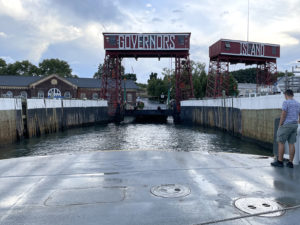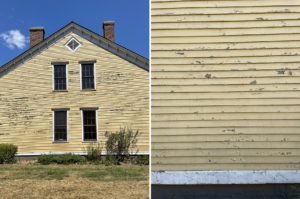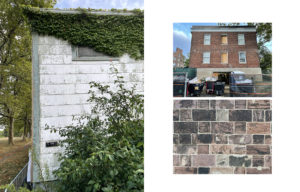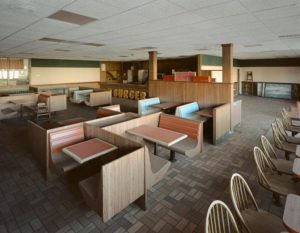Governors Island: Balancing the Past with the Future
Excerpts from an interview with Nicole De Feo on August 2nd, 2022
By Leila Behjat and Sam Bennett
Nicole De Feo is the Director of Design and Construction, Trust for Governors Island overseeing the fate of existing buildings. Many of these buildings have been vacant since the Coast Guard left in 1996, almost 30 years ago, leaving behind unmaintained, dilapidated structures. Because this is a small island with limited transport as only two ferries pace back and forth from the bottom of Manhattan to the island’s dock, there’s incentive to keep what happens on the island simple, more sustainable, and more circular.

One of Nicole’s biggest challenges to her job is examining the state of existing buildings on the island and determining what can be kept and what needs to be torn down. This is quite the balancing act, because of the variety of stakeholders’ priorities – the City of New York, the Landmarks Preservation Commission, and the island’s real estate developers. Nicole laments, “I’d love to say that first and foremost it’s an issue of maintaining and reusing, but it is also an issue of cost. It’s simply cheaper to tear down and rebuild.”
But if we don’t tear down and instead we keep what exists, even if it is the shell of a building, it’s critical to acknowledge just how hard maintenance is (See Minereh K.’s interview). We couldn’t help but compare notes to Tahereh Holmes’ role as a preservationist, particularly when Nicole said, “In a lot of ways preservation overlaps with this idea of maintenance and sustainability and longevity, knowing it’s built well from the beginning. Maintaining it properly is the hardest part of the equation, because all of these entities that steward these public assets are always vying for money and staff and that’s the hardest part – the maintenance. But like anything, if you’re on top of it and you don’t have deferred maintenance, you can really extend the life of material and therefore the building system.” She continues, “We have a lot of buildings that are ‘mothballed’. They’re not really being maintained – they’re deteriorating. We have to fence them, so they cannot be accessed by the public, which now become stabilization projects.”

Nicole works with a variety of people – developers, contractors, landscapers and to level set the true cost of maintenance and its importance. She often explains, “The shortcut you take today or if it doesn’t look so bad today, is part of a larger problem if you don’t know how to maintain it properly. Deferred maintenance is then going to become a capital project, where we’re going to have to replace the roof, or replace all the mortar on the facade. Who wants to do that? Then that becomes a real cost issue. These are symptoms of the economic fury and capitalist society we participate in. People can’t imagine that there’s these long term effects. Building materials are not infinite.”

Nicole expands on her thoughts by zooming out and connecting back to daily life in New York City and the population’s numbness and fascination with old and unworking systems. “A lot of the people are so attached to this sort of decayed state or to this sort of less-than-ideal state, and they have equated that with what’s valuable about Governors Island and that’s so interesting. It’s similar to something like the Pantheon. Nobody thinks about these spaces in color, as they were painted originally built. We all like to define Roman and Greek ruins in a state of beige and we like it. You’re attached to it and have romanticized it and it’s completely inaccurate. I think about that at Governor’s Island a lot. Buildings have a patina to them and/or are partially falling apart, but this isn’t ever really what it was like before. It was always an active military base, there were always so many people here and it was always so busy, like a hub.”

She continues, “It’s interesting what you do get attached to, and understand why you get attached to that moment in time, and what that means. There’s obviously some sort of value in that, and I don’t think people are wrong for saying why they enjoy it in that condition because it’s all obviously in opposition to everything else that’s happening in the city, where everything is getting redeveloped and replaced. It’s very interesting to see what the look back period is and what is considered worth saving and restoring.”
For your consideration:
Deferred Maintenance: During the development and construction process, it’s easy to ignore the need to maintain a new building, and more so an easy way to lower costs. Yet, without consistent upkeep, the true cost of deferred maintenance is eventually revealed. Without maintenance, a building’s needs can push past the point of a simple fix or renovation, and instead can only result in a tearing down and rebuilding. This is exponentially more expensive not only monetarily, but from an environmental perspective, as the tear down-rebuild model requires new materials and contributes to landfill waste.